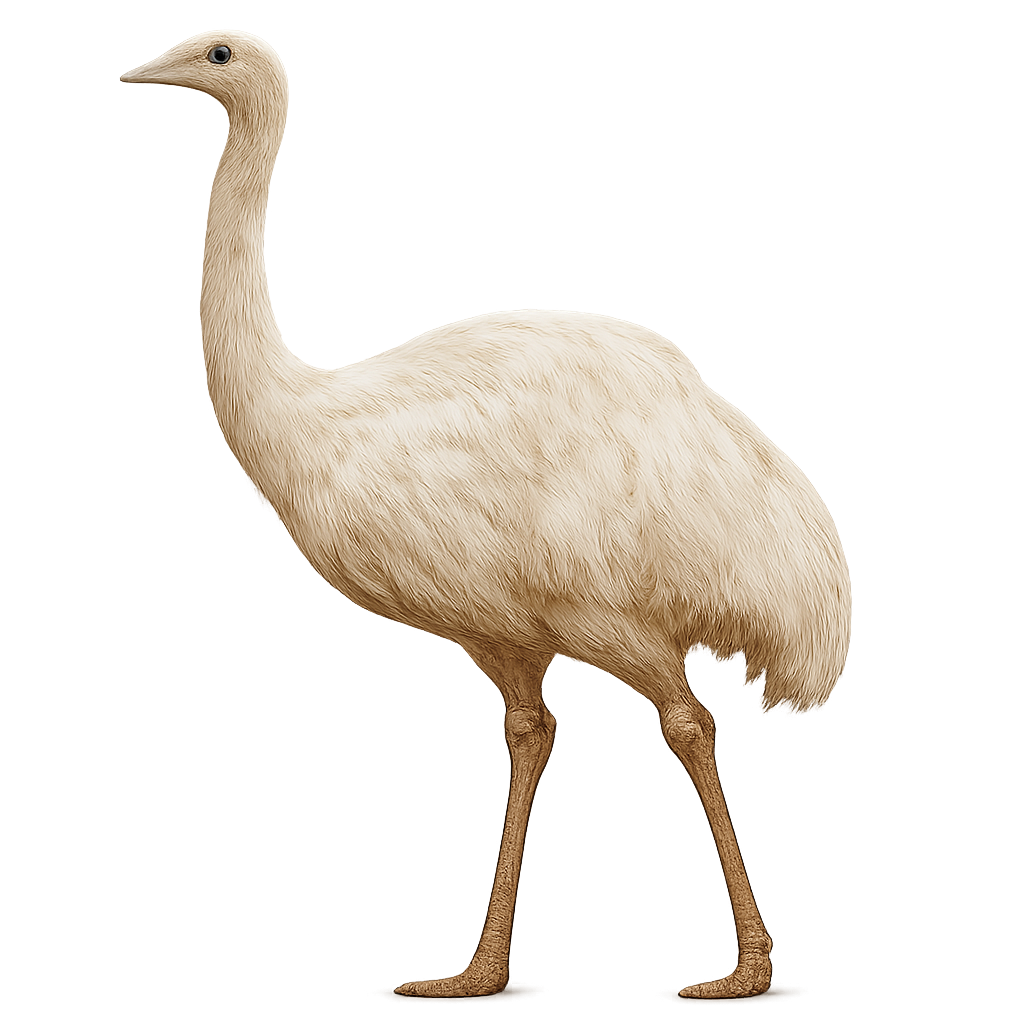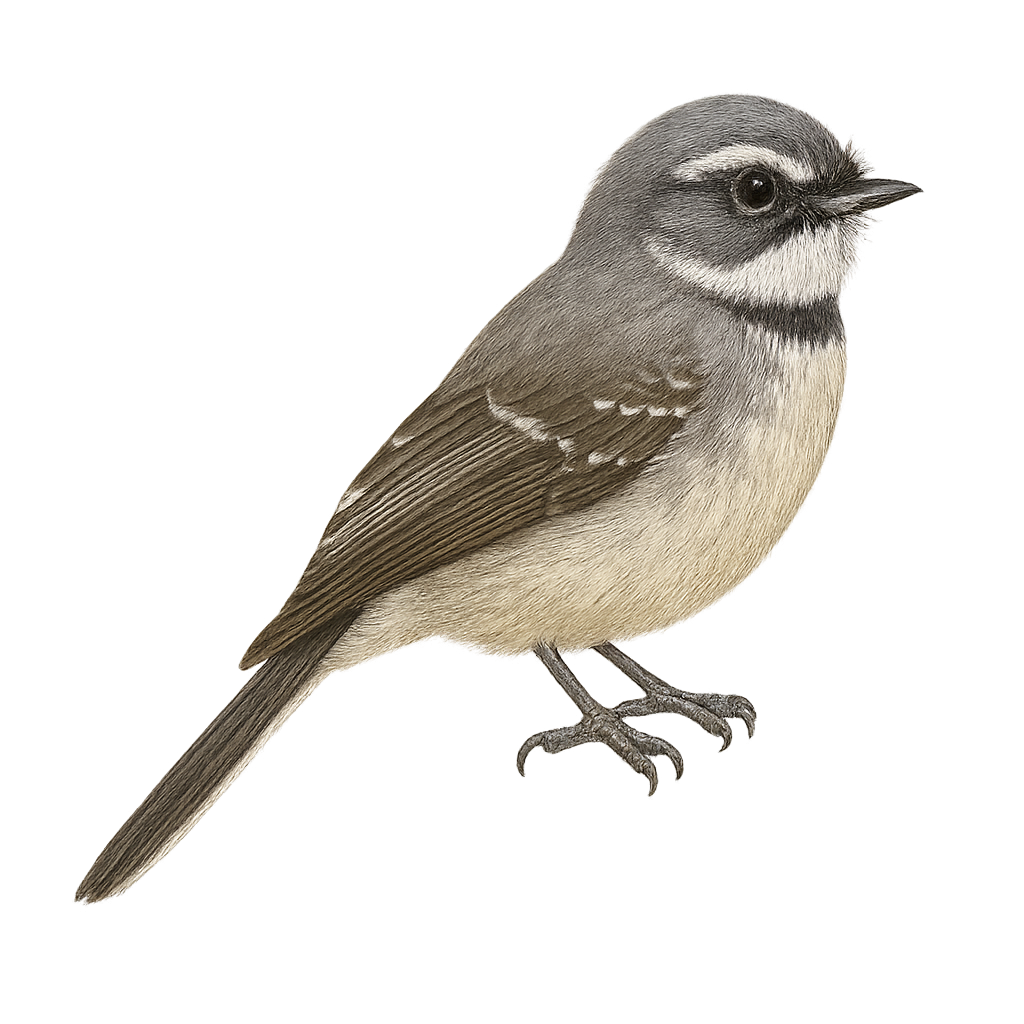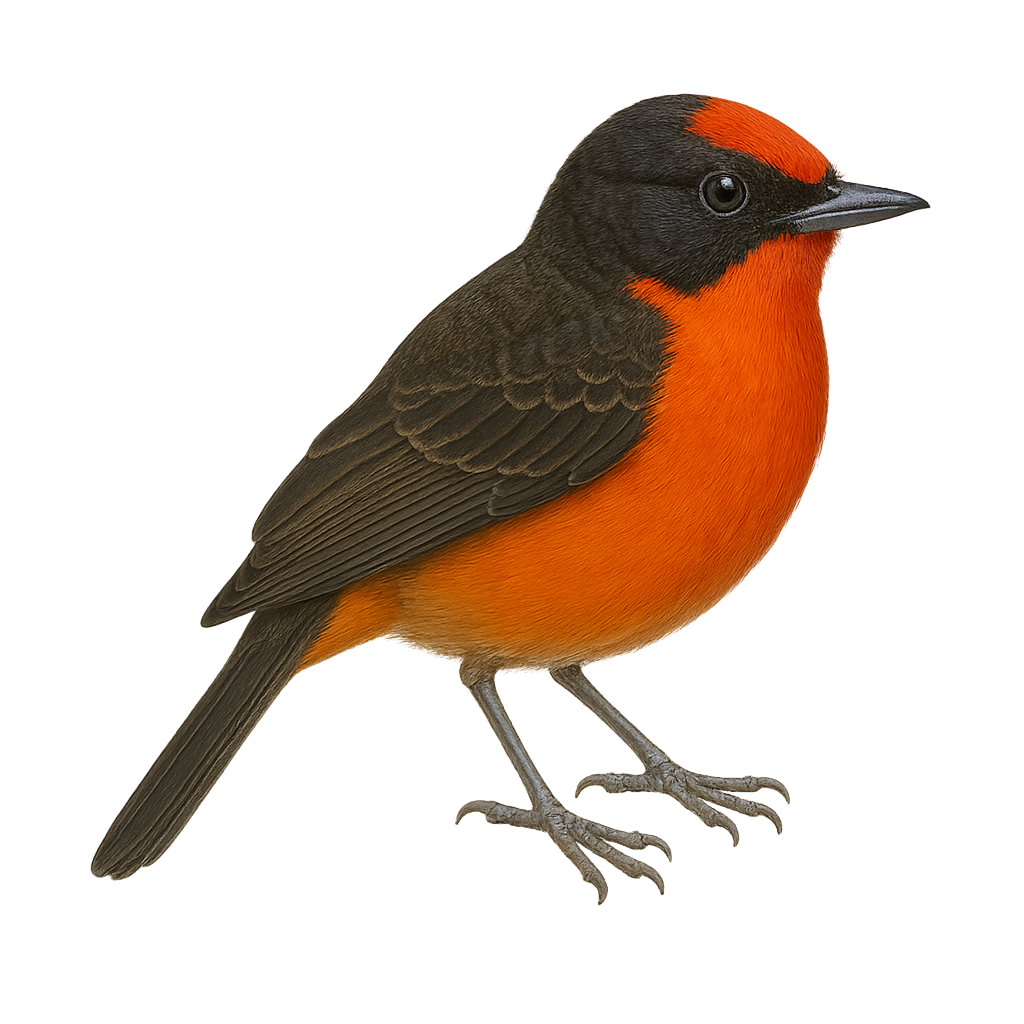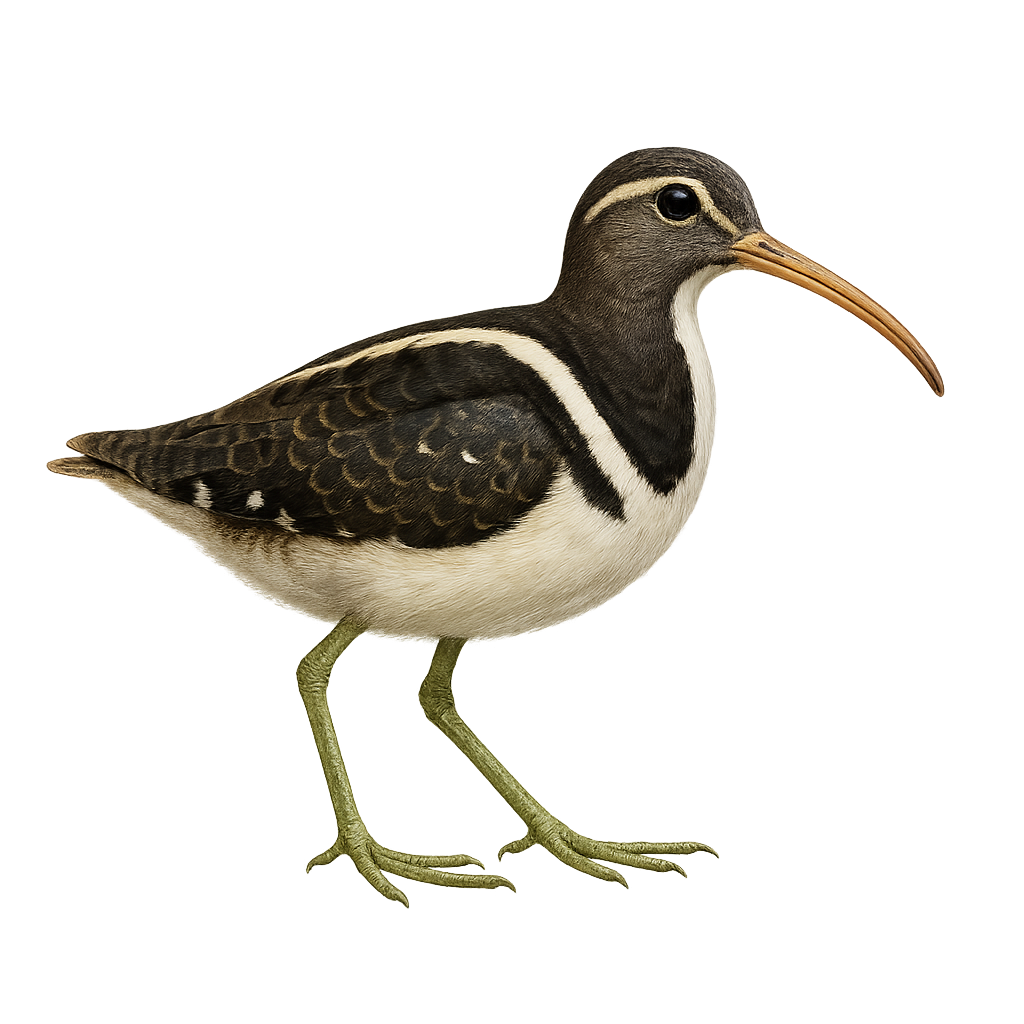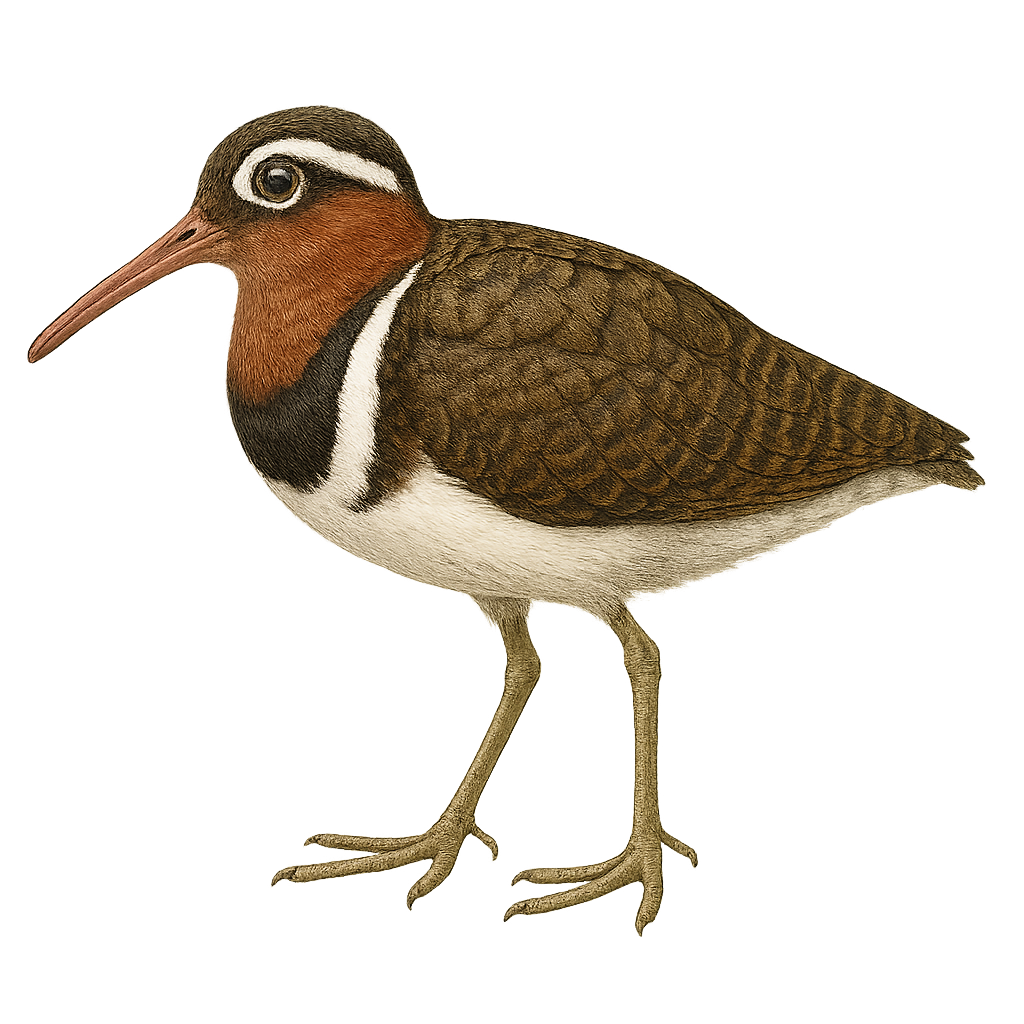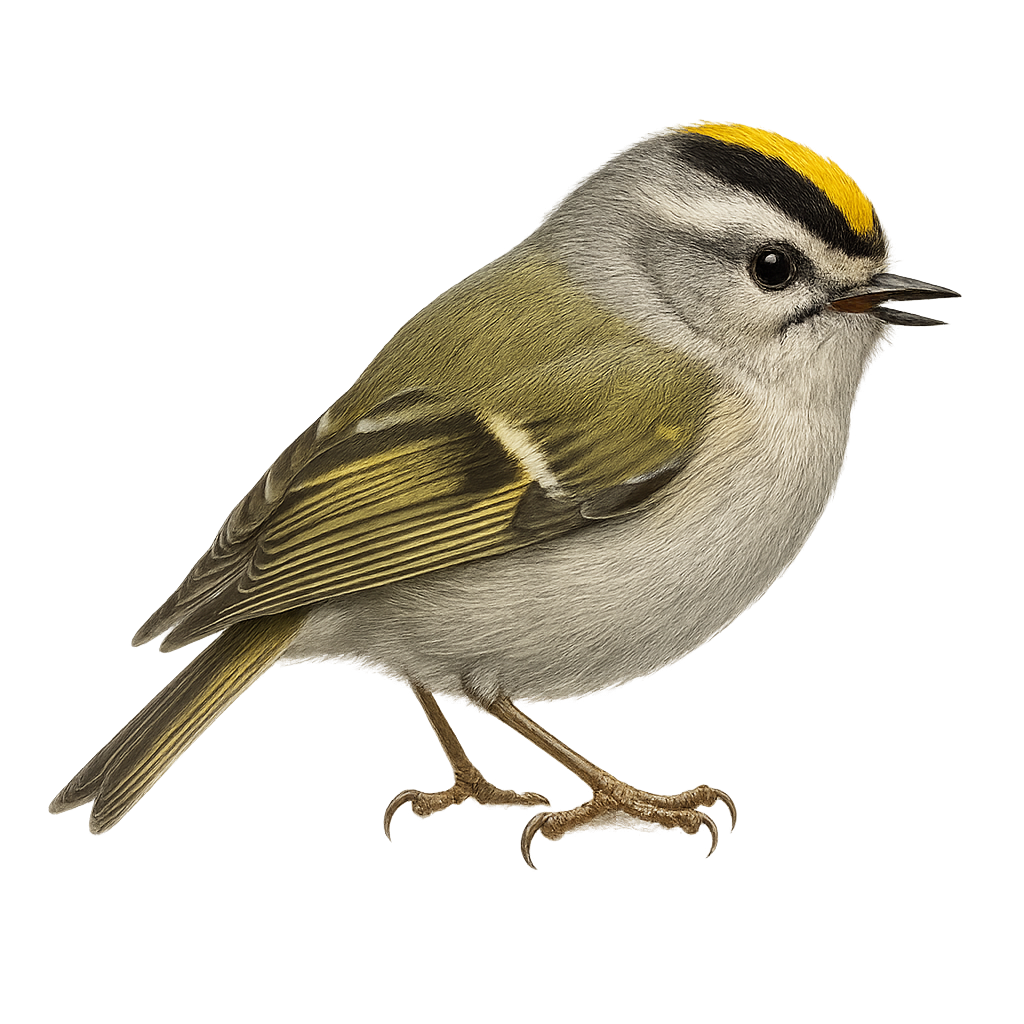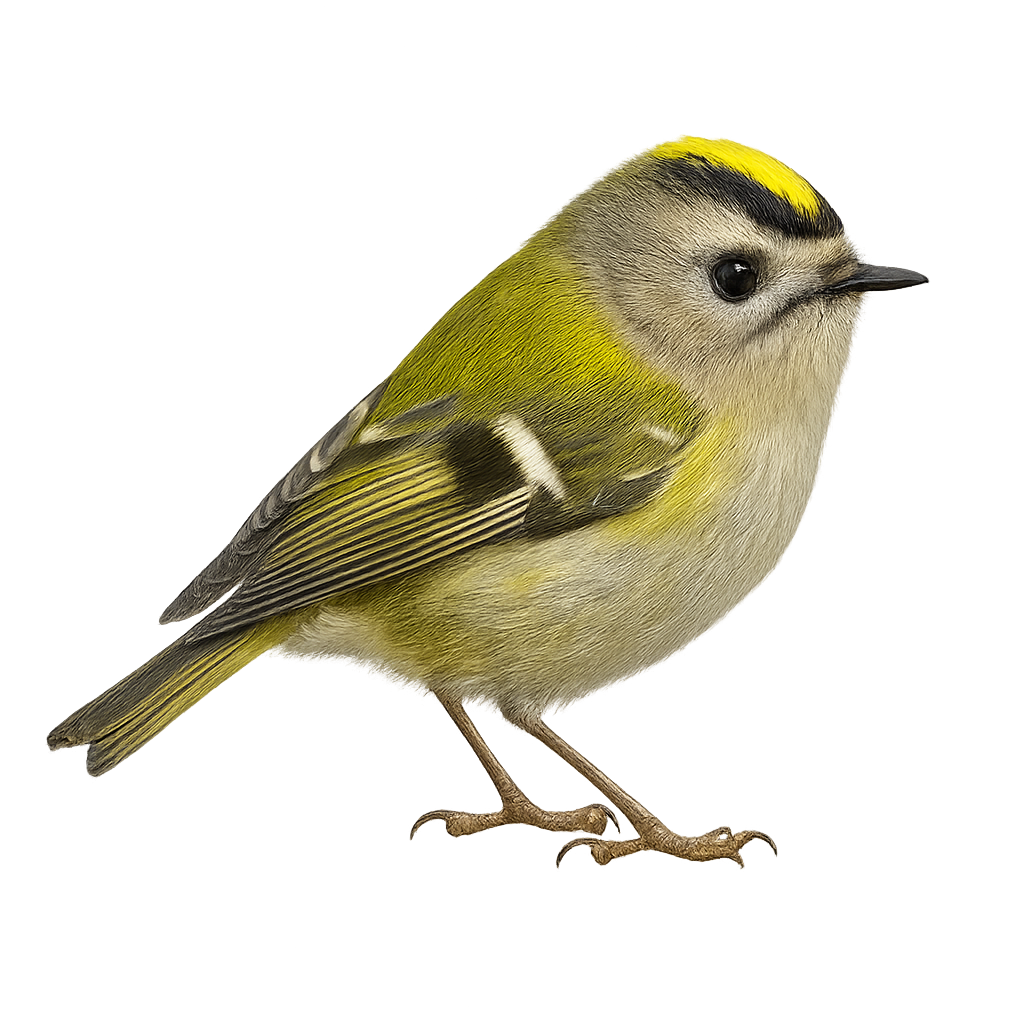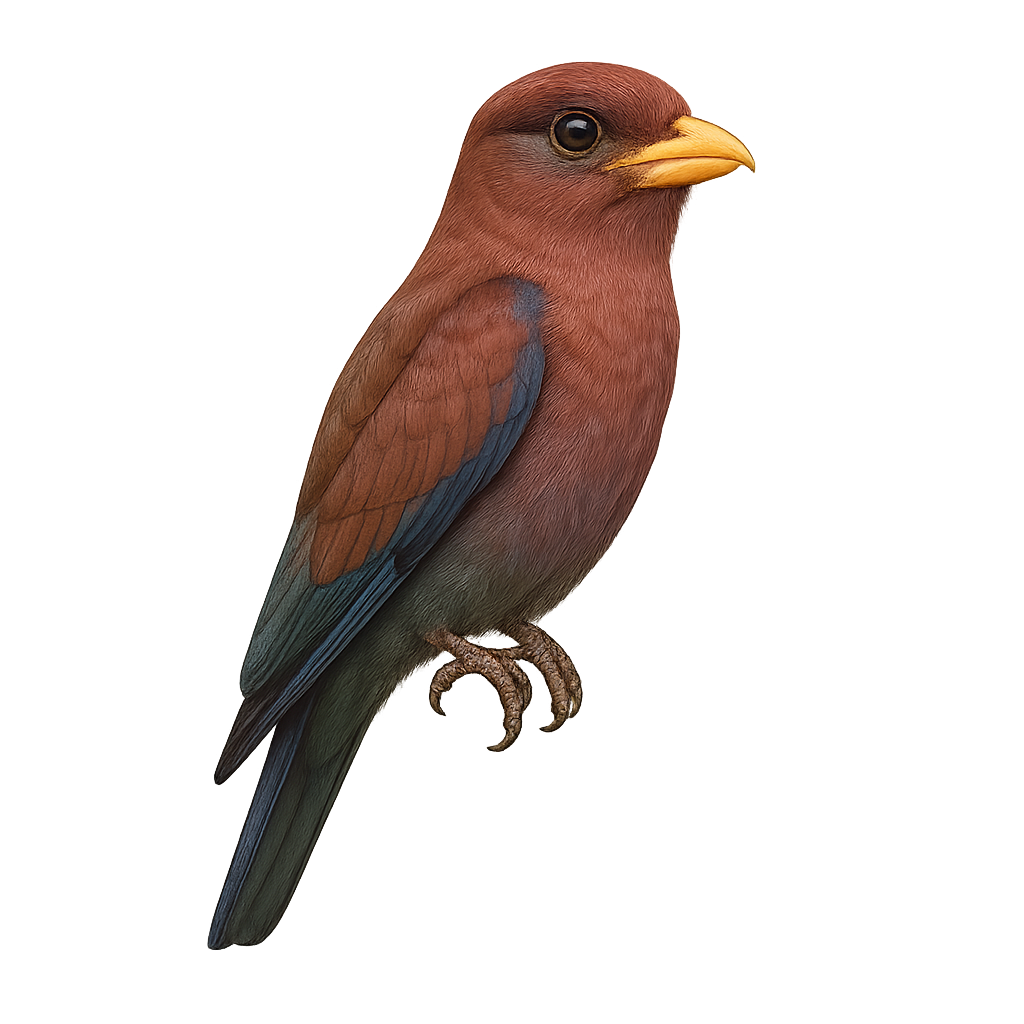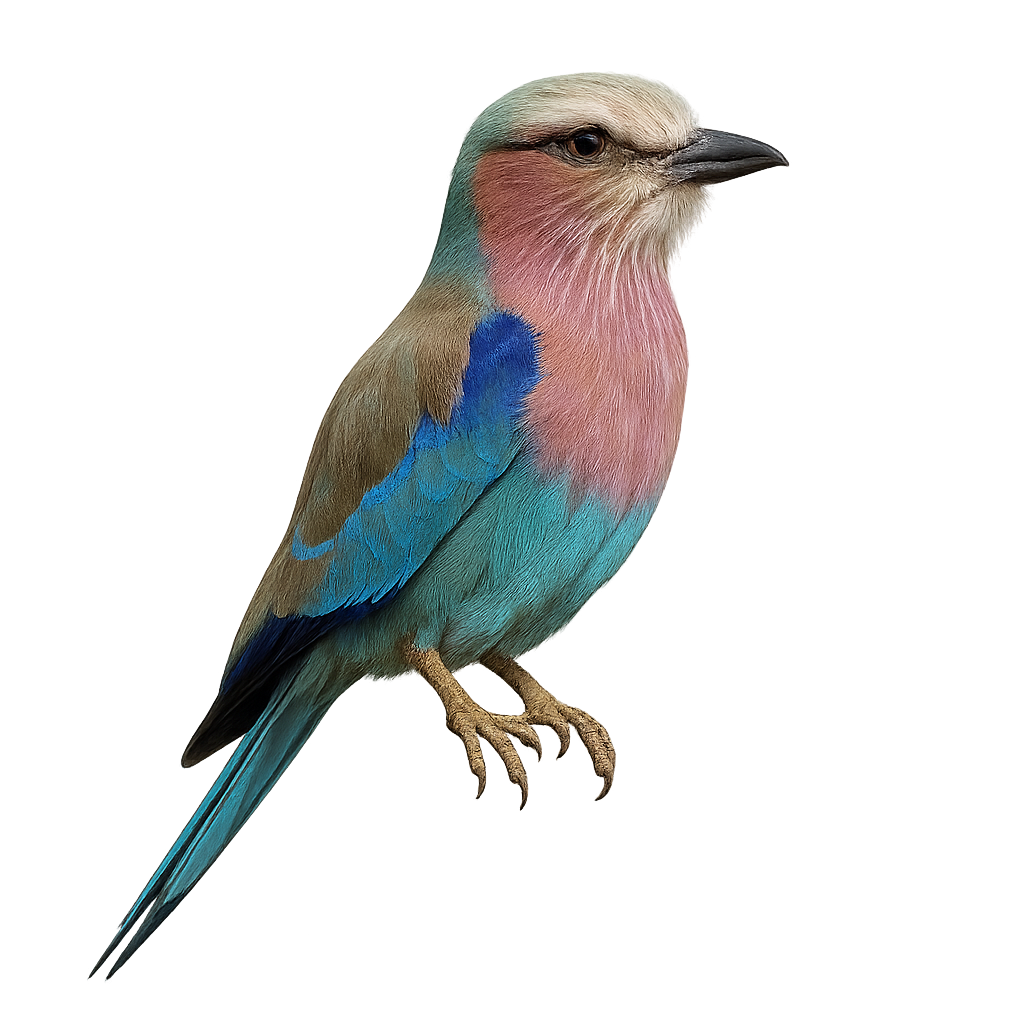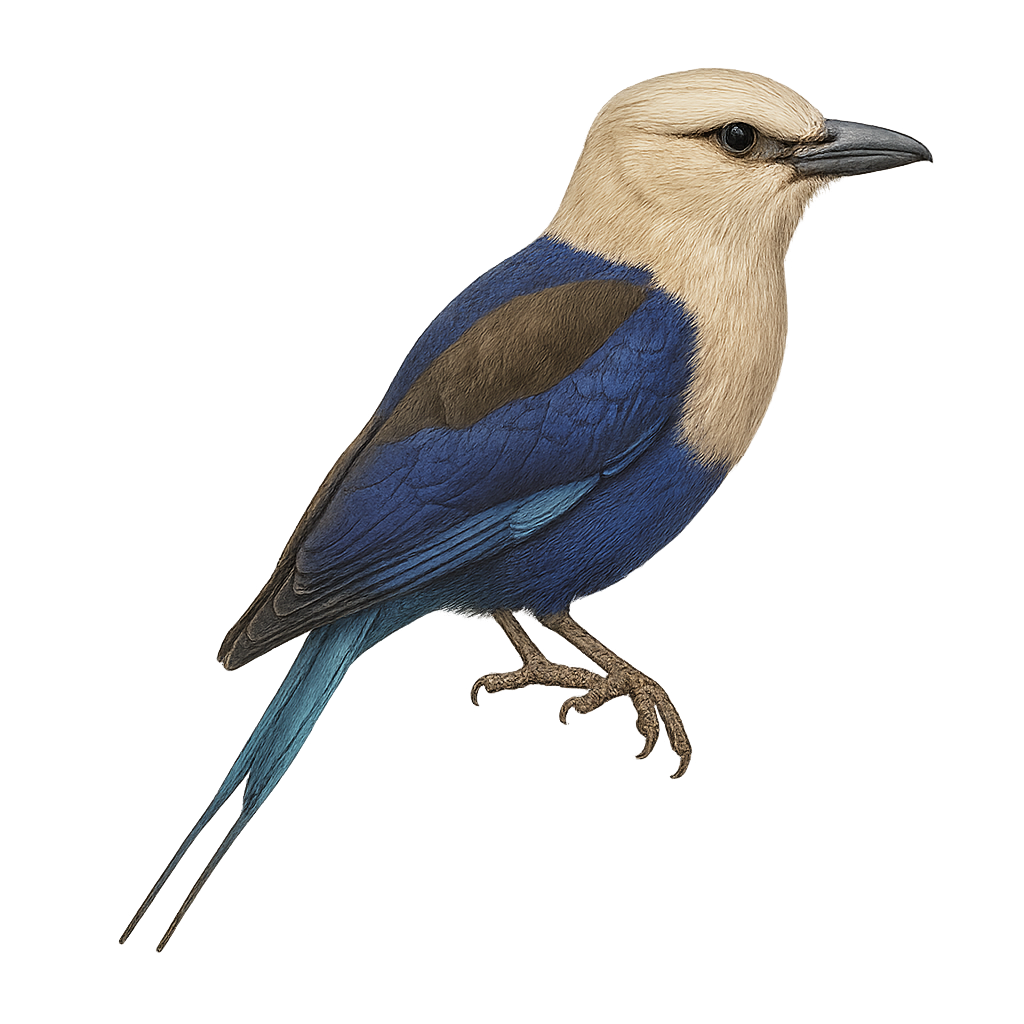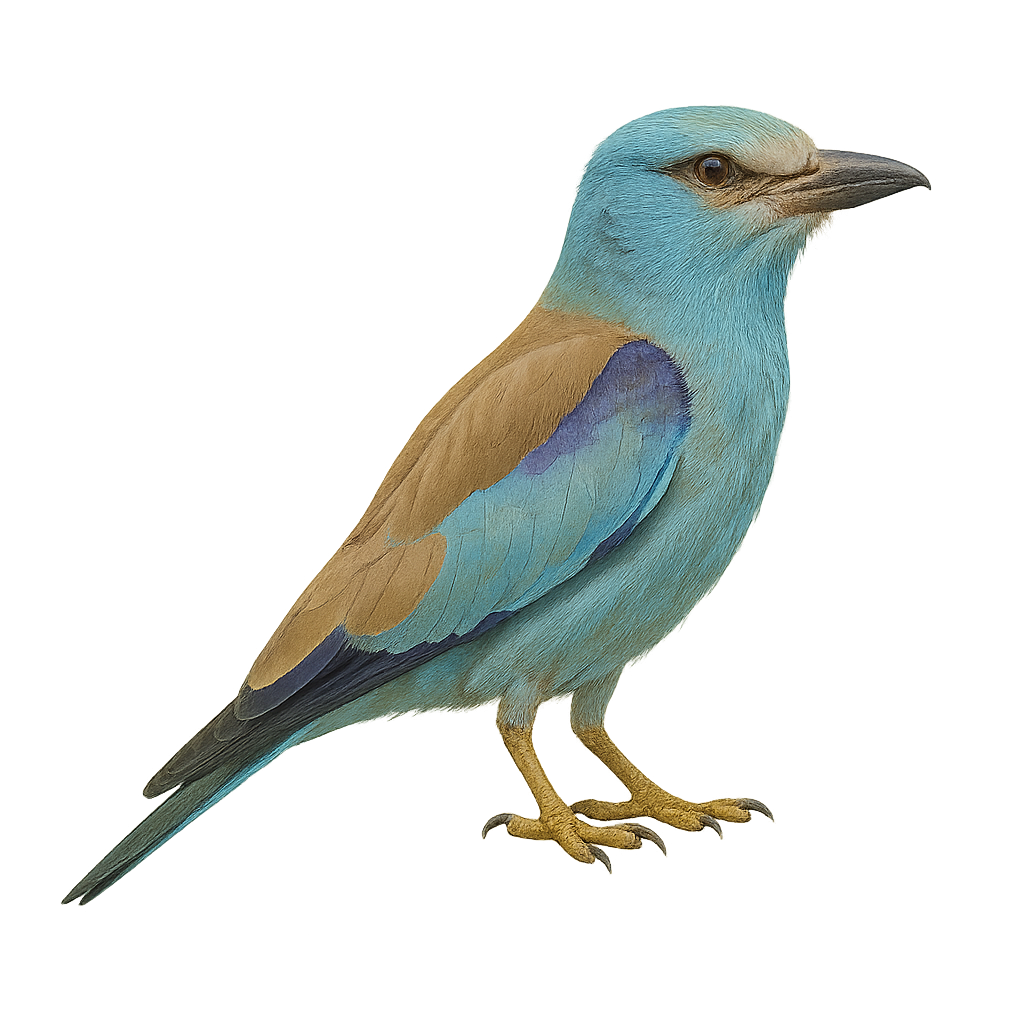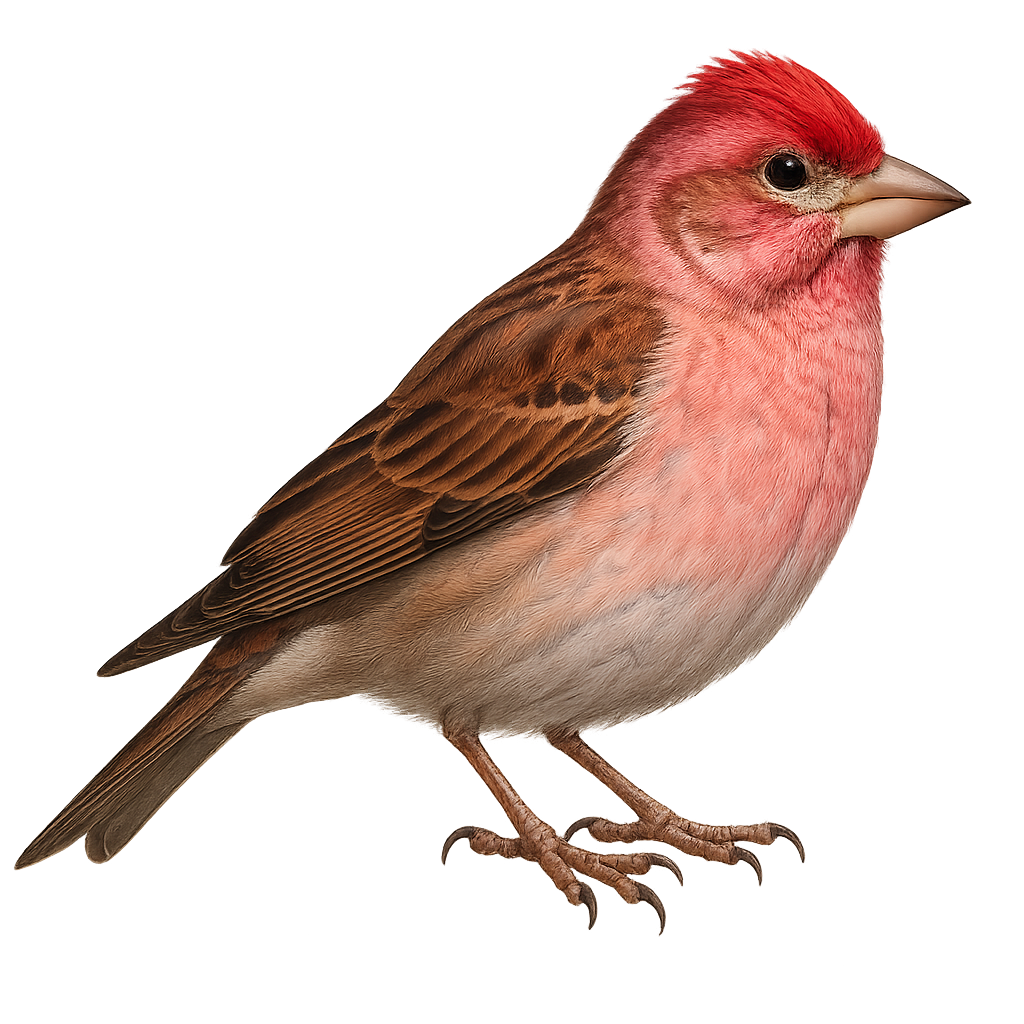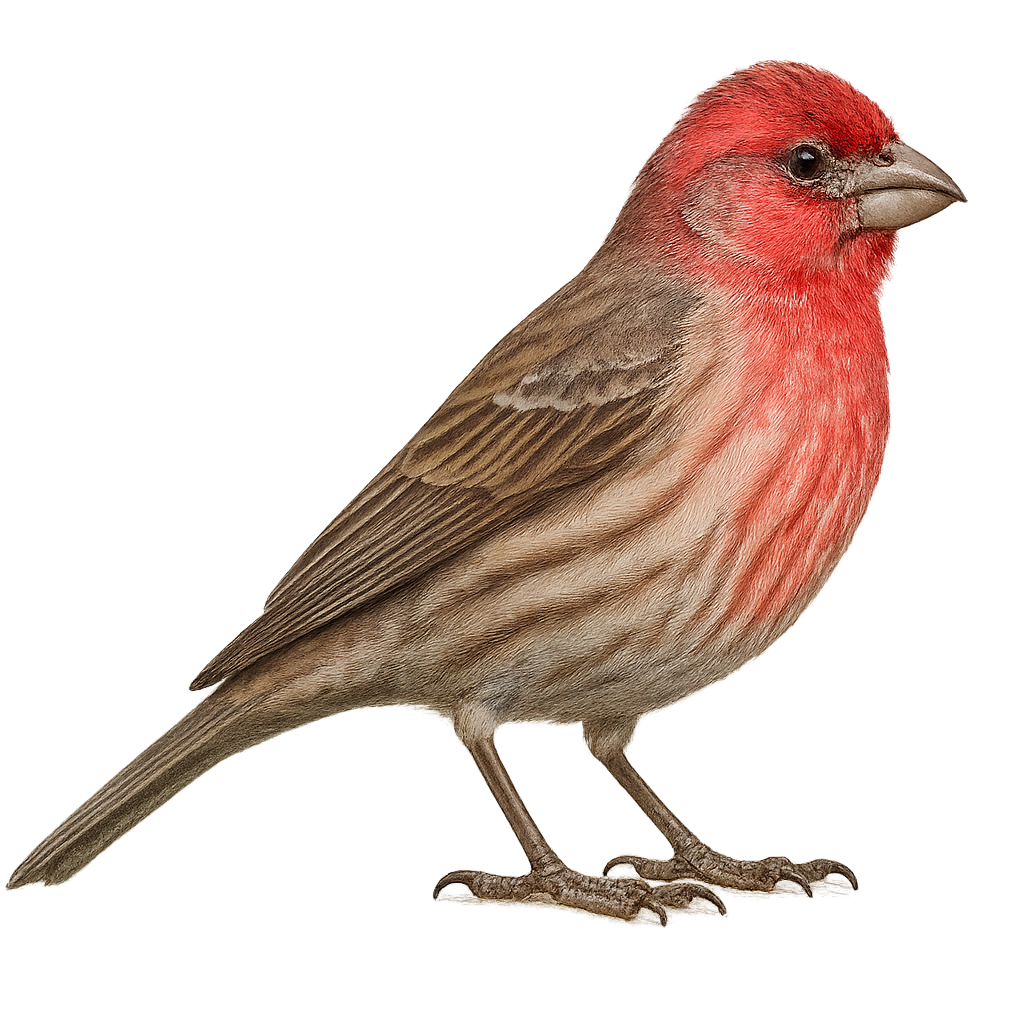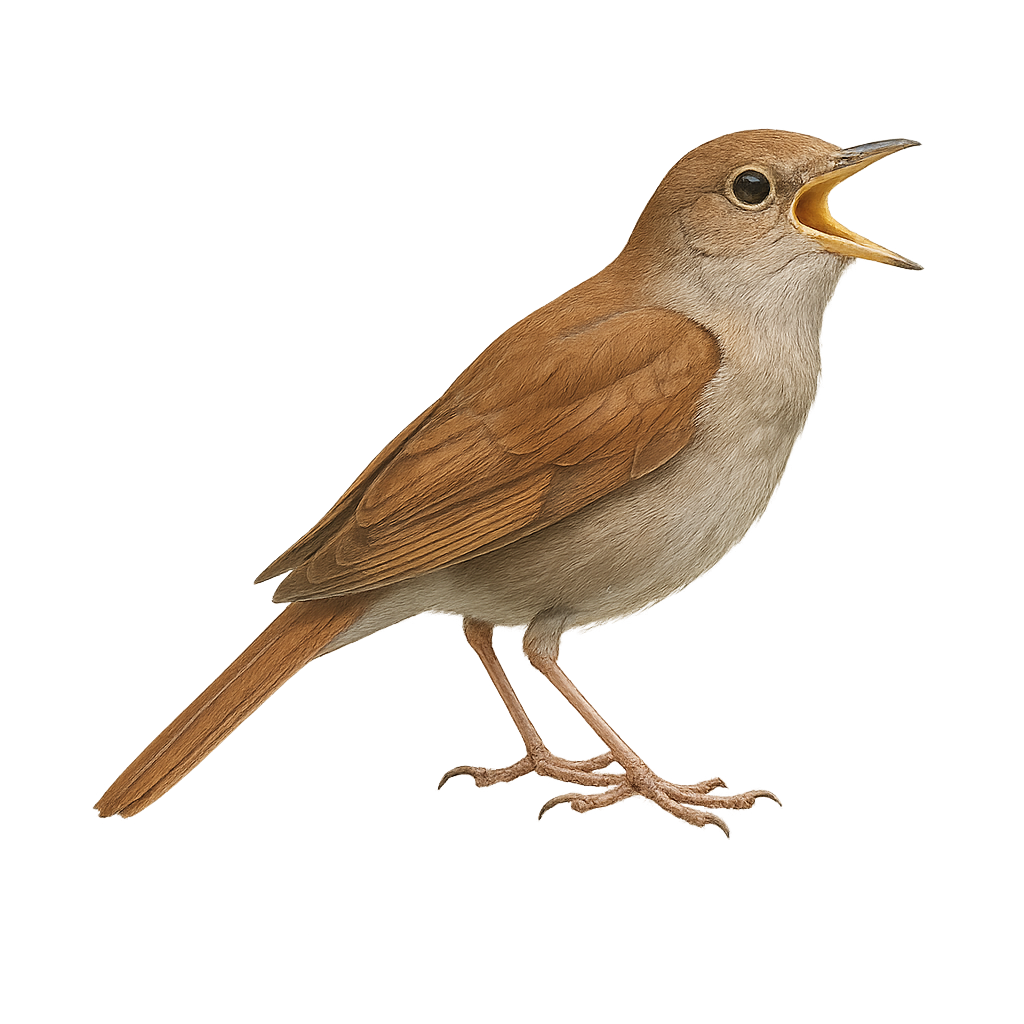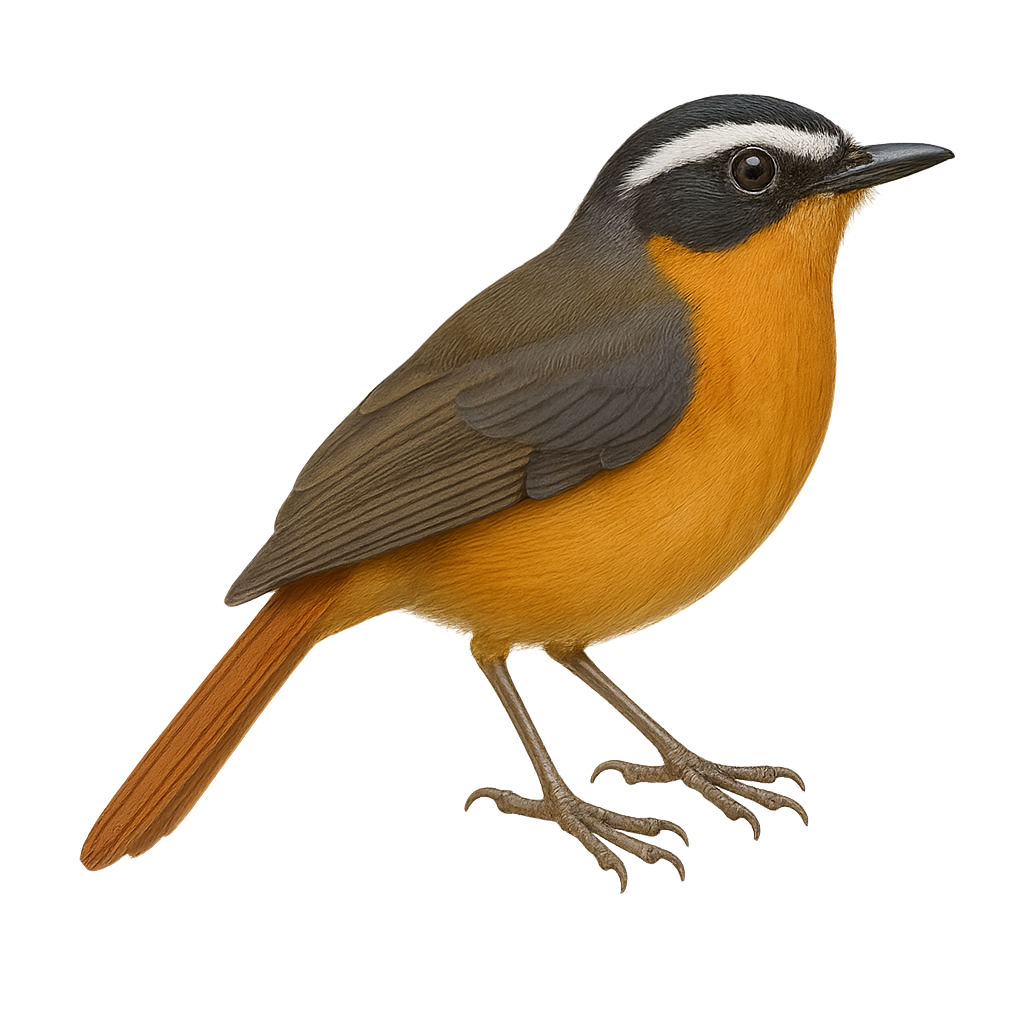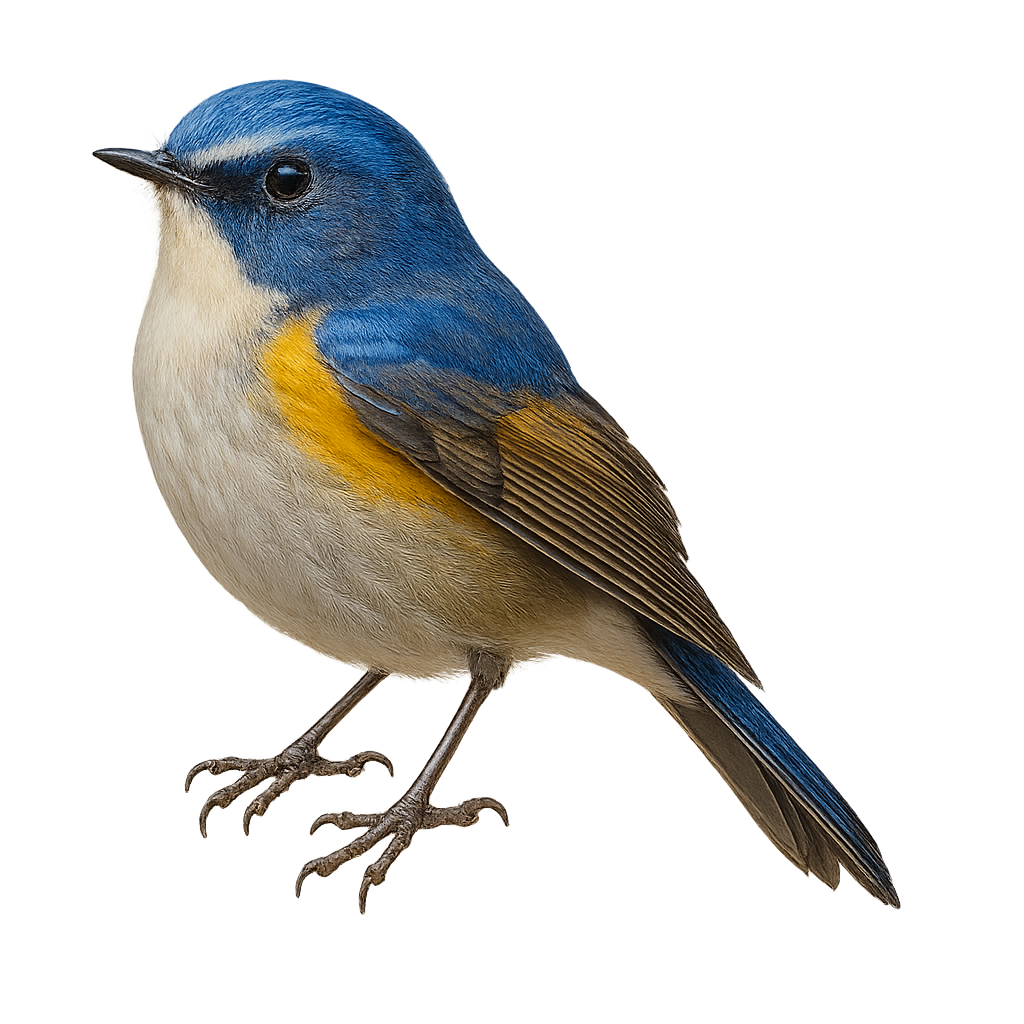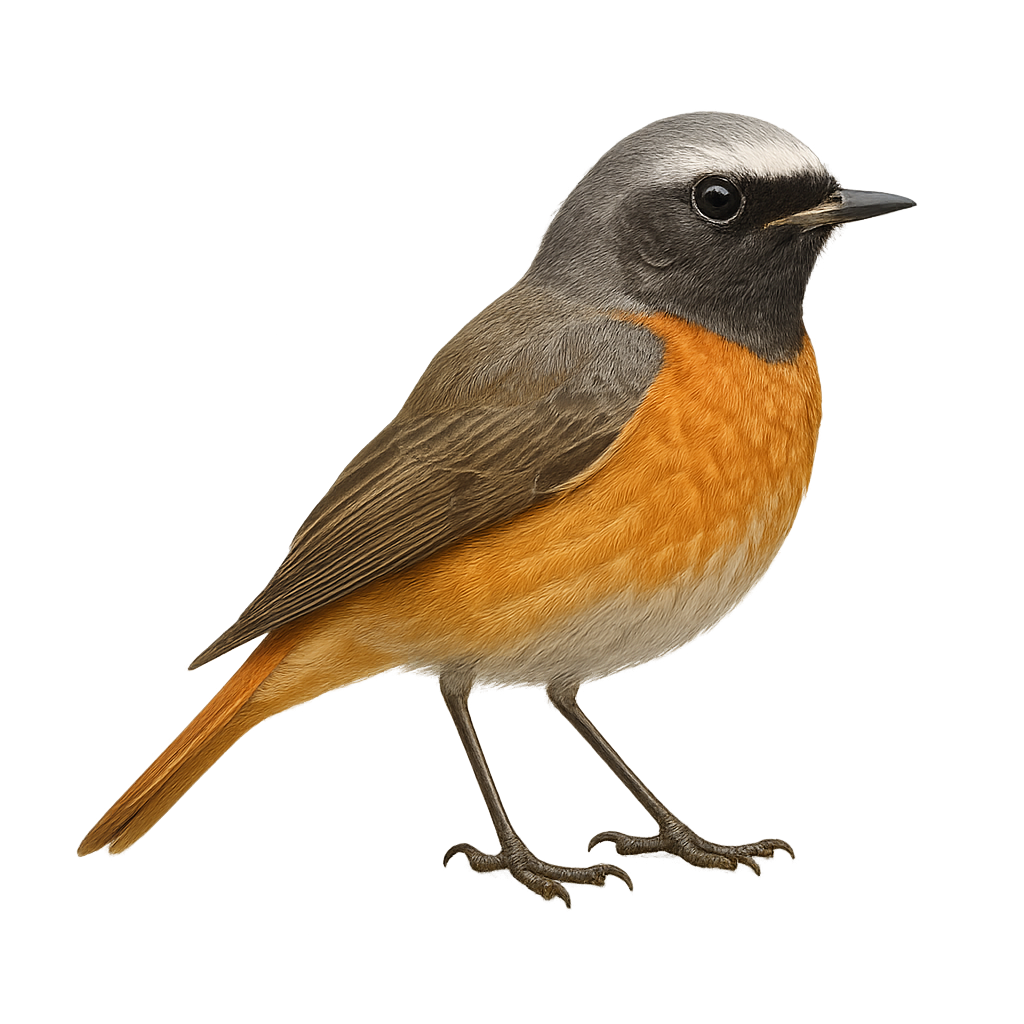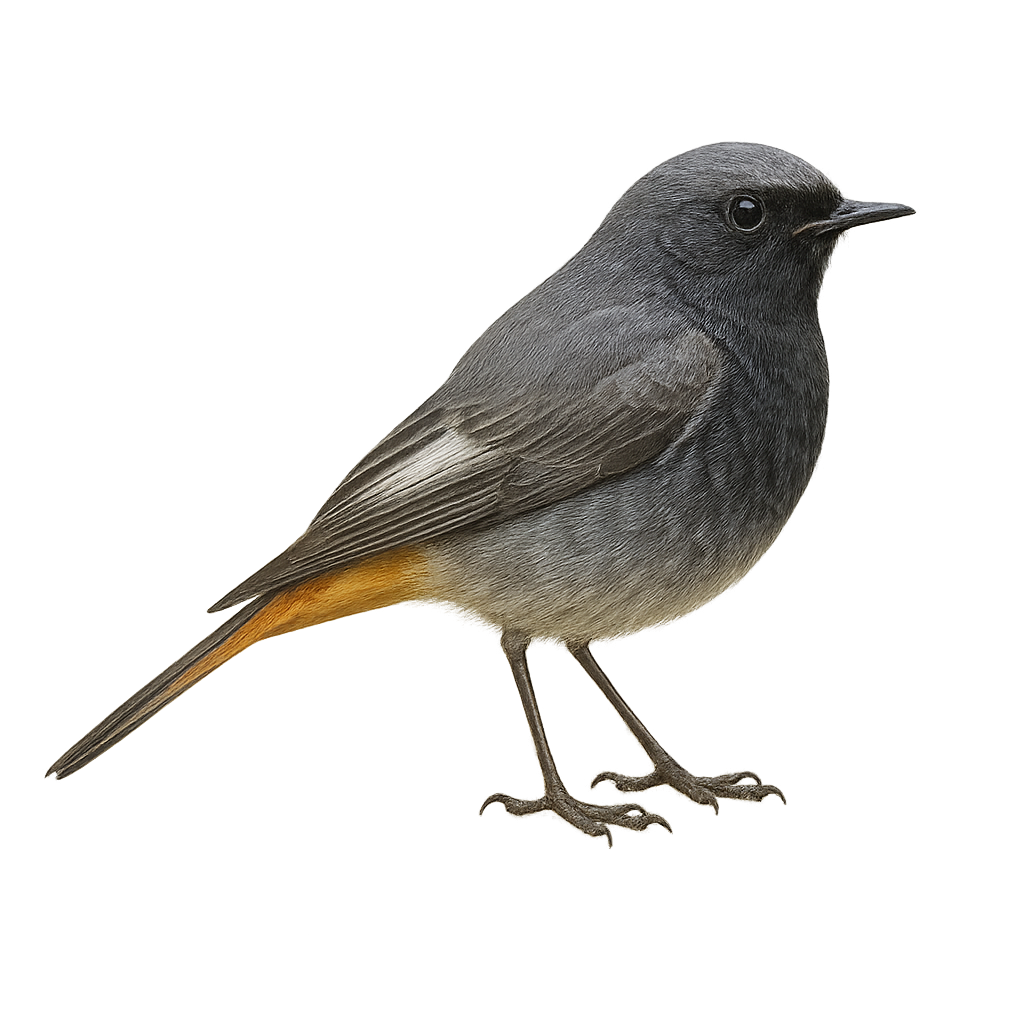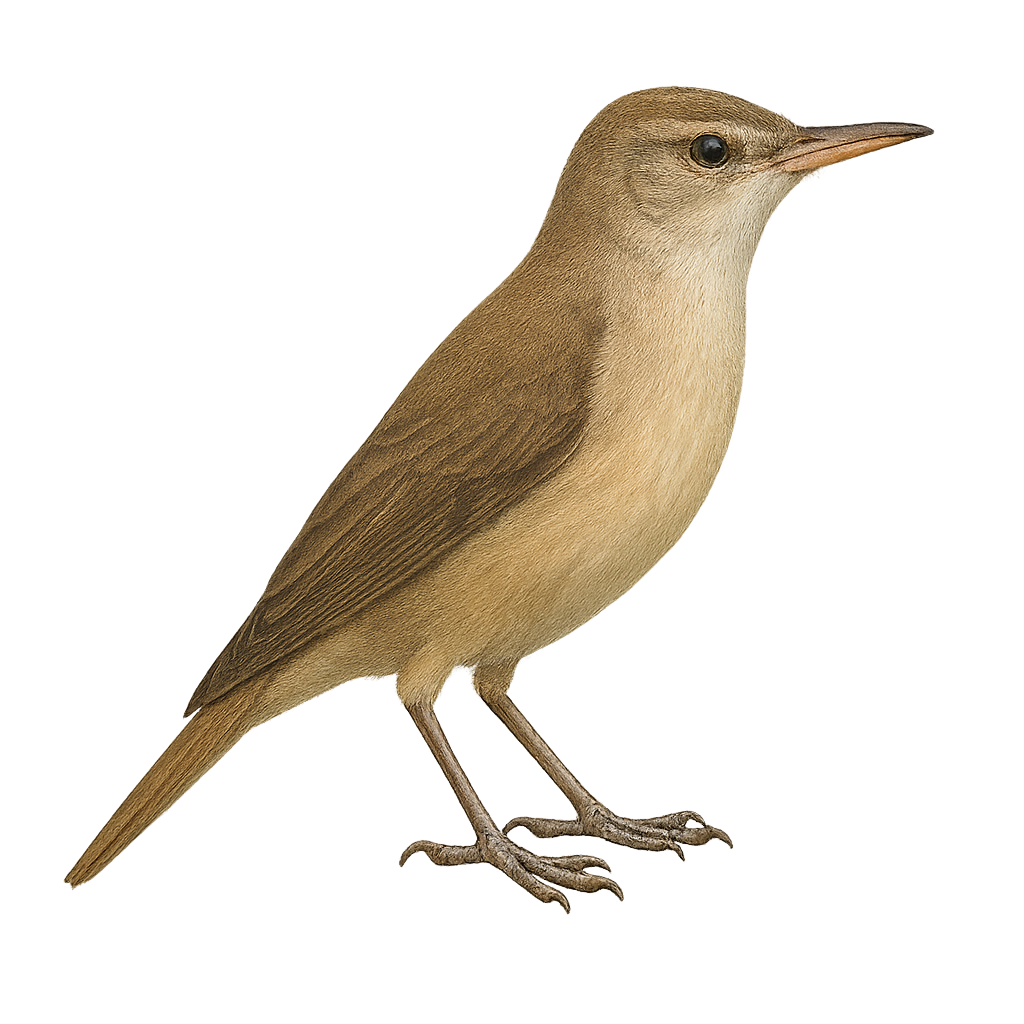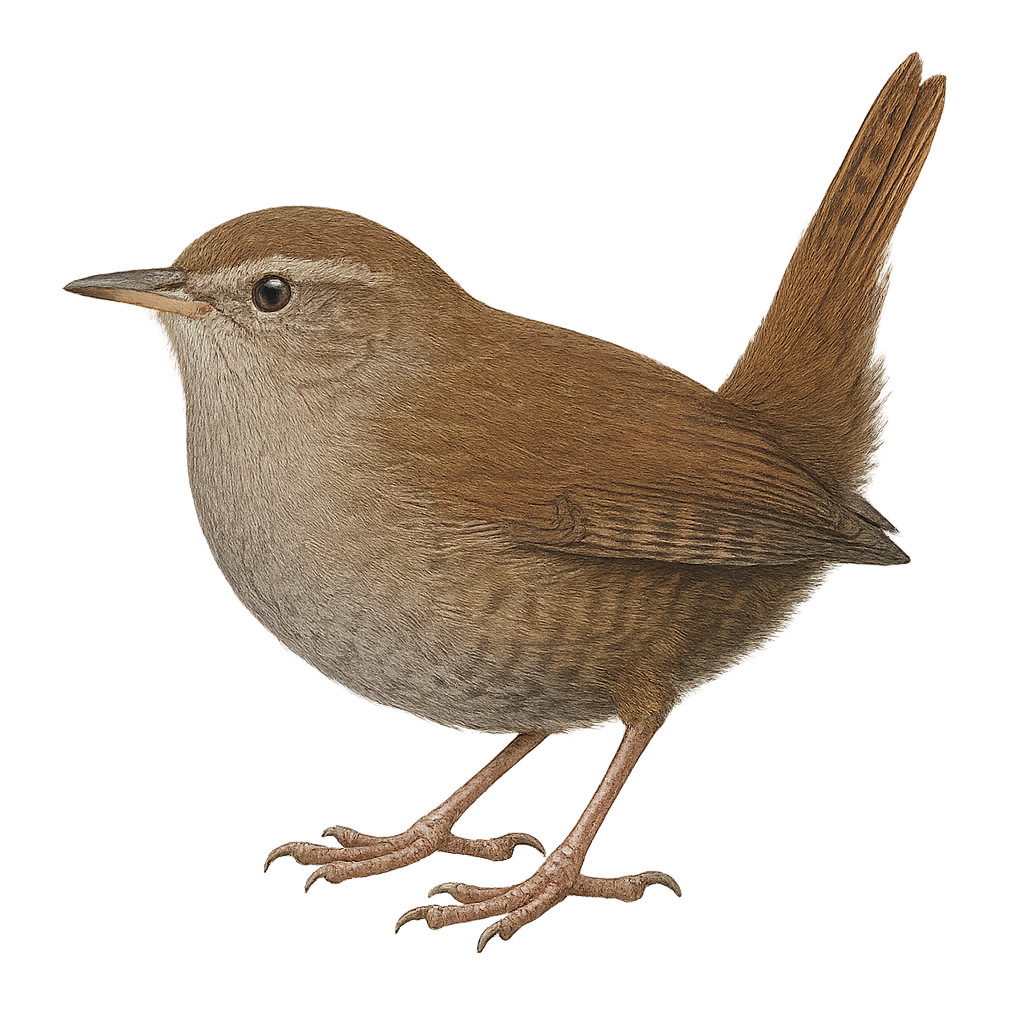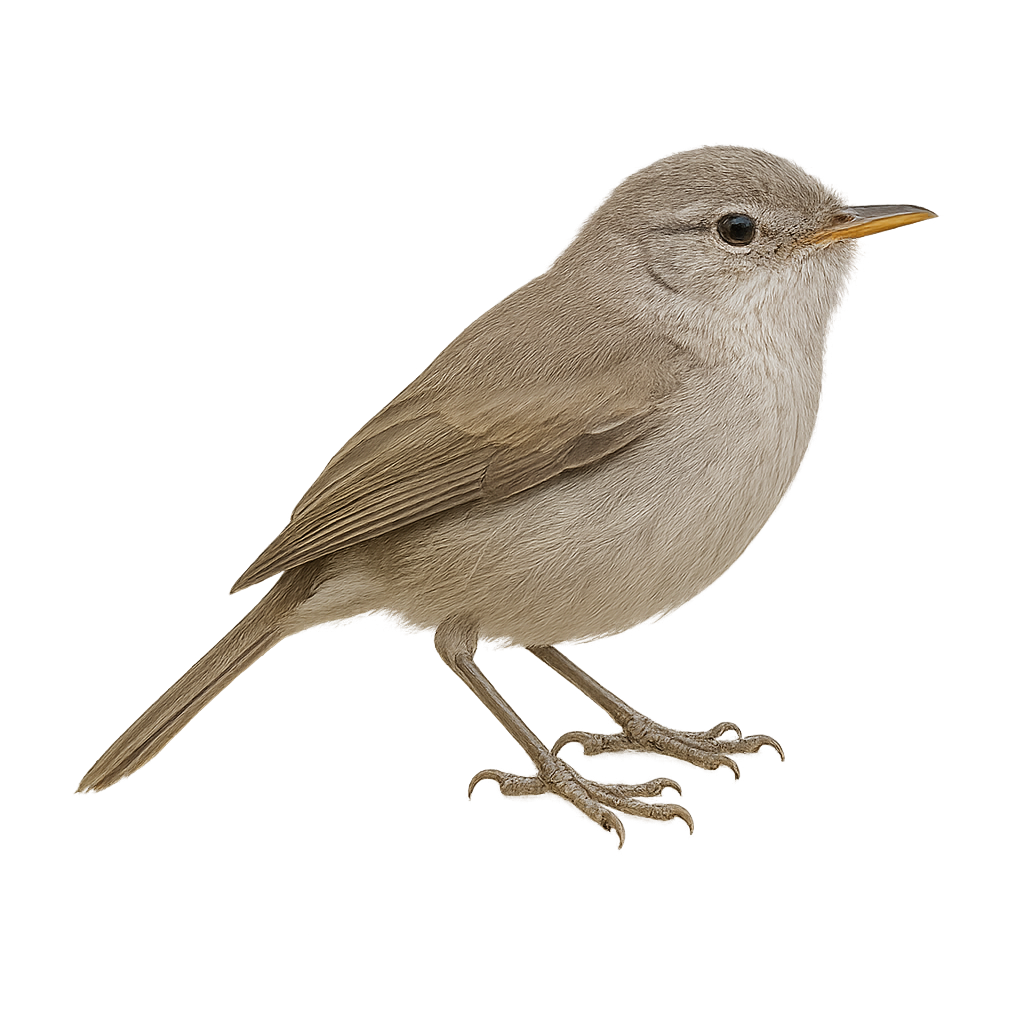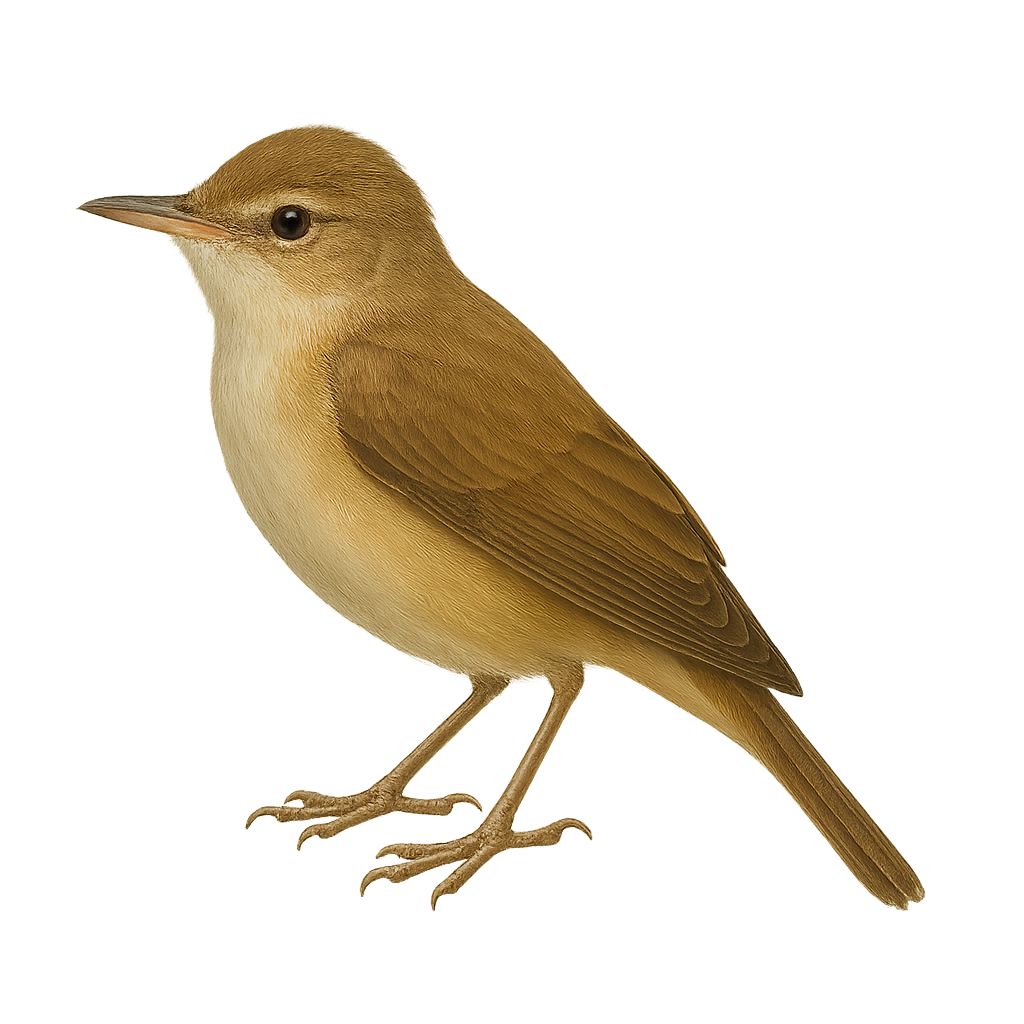The greater rhea is a large flightless bird in the family Rheidae, standing 1.4–1.7 m tall and weighing 20–27 kg, with grey plumage and a long neck. It inhabits grasslands, savannas and wet meadows of South America, feeding on plants, seeds, insects and small vertebrates. During the breeding season, males dig shallow nests in the ground and alone incubate the 20–40 eggs laid by multiple females.
The White-throated Fantail, or Rhipidura albicollis, is a medium-sized bird easily recognized by its fan-shaped tail and contrasting plumage. It features a striking white throat that stands out against its dark gray body. This bird is often found in the tropical and subtropical forests of South and Southeast Asia, where it primarily feeds on insects. Agile and lively, it is known for its aerial acrobatics while hunting. The White-throated Fantail is a social bird, often seen in small groups or pairs. Its ability to adapt to various habitats, including gardens and parks, makes it a relatively common bird within its range.
The Willie Wagtail is a small, lively bird commonly found in Australia and parts of New Guinea. It is easily recognizable by its distinctive black and white plumage and long tail, which it frequently wags. This behavior helps it catch insects in flight. It prefers open habitats such as grasslands, sparse forests, and urban gardens. Although territorial, it is often seen following larger animals to catch insects they disturb. Its song is melodious and varied, making it popular among bird watchers.
The Crimson Finch, or Rhodospingus cruentus, is a bird from the Thraupidae family, known for its striking plumage. Males display a vivid red color on their head and body, contrasting with black wings and tail, while females have duller, often brownish tones. This bird measures about 13 cm in length and weighs between 15 and 20 grams. It is mainly found in tropical and subtropical moist forests, as well as dense shrub areas. The Crimson Finch is a sociable bird, often seen in small groups. Its diet consists mainly of fruits, seeds, and insects. Although its conservation status is currently "least concern", deforestation poses a threat to its natural habitat.
The South American Painted-snipe, or Nycticryphes semicollaris, is a medium-sized aquatic bird known for its distinctive plumage and elusive habits. It features brown plumage with white and black patterns and a partial collar that gives it its name. This bird is primarily nocturnal and crepuscular, feeding on insects and small invertebrates found in wetlands. It is mainly found in South America, particularly in Argentina, Paraguay, and southern Brazil. The South American Painted-snipe prefers marshes, wet meadows, and lake edges, where it can easily blend in with its surroundings. Although its conservation status is not of concern, it is often difficult to spot due to its discreet behavior and often inaccessible habitat.
The Greater Painted-snipe, Rostratula benghalensis, is a medium-sized wading bird known for its distinctive plumage and unique behavior. Females, larger and more colorful than males, display vibrant shades of brown, white, and black. This bird favors wetlands, such as marshes and rice paddies, where it feeds mainly on insects, crustaceans, and seeds. The Greater Painted-snipe is noted for its unusual breeding behavior: females are polyandrous and take the lead in courtship. They lay their eggs in shallow nests, which males incubate. Although widely distributed in sub-Saharan Africa, South, and Southeast Asia, this species is sometimes threatened by the loss of its natural habitat.
The Golden-crowned Kinglet is a small, lively bird, easily recognized by its bright yellow crown bordered with black. It primarily inhabits the coniferous forests of North America, where it is often seen darting through branches in search of insects. Its plumage is mainly gray-olive, with darker wings and tail. Despite its small size, it is hardy and can withstand very low temperatures. Its song is a high-pitched, rapid trill, often heard before the bird is seen. The Golden-crowned Kinglet is a sociable bird, sometimes forming mixed flocks with other small bird species.
The firecrest is a small passerine bird found primarily in coniferous and mixed forests across Europe and Asia. It is easily recognized by its bright red crown, white and black stripes on its head, and its small size. This tiny bird primarily feeds on insects, which it forages for among leaves and needles in trees. It is also known for its quick movements and high energy.
The golden-crowned kinglet is an incredibly small bird found mainly in dense coniferous forests across Europe and Asia. It is distinguished by its tiny size, olive-green plumage, and the bright yellow patch on its head. This passerine bird is an excellent acrobat, often seen hopping between branches searching for insects and small arachnids. The golden-crowned kinglet is a discreet but highly energetic bird, known for its lively behavior and ability to forage in tight spaces.
The Broad-billed Roller, or Eurystomus glaucurus, is a colorful and fascinating bird primarily found in sub-Saharan Africa. It is recognizable by its vibrant plumage, which combines shades of blue, green, and brown, and its characteristic broad bill. This bird measures about 29 cm in length and prefers open habitats such as savannas, light forests, and wooded areas. It is often seen perched on exposed branches, from where it surveys its territory. The Broad-billed Roller feeds mainly on insects, which it catches in flight with great agility. Its flight is fast and direct, often accompanied by acrobatic rolls.
The Lilac-breasted Roller, known for its vibrant plumage, is an iconic bird of the African savannas. Its head and chest display lilac hues, while its wings exhibit a mix of bright blue and green. This bird is often seen perched on trees or poles, scanning the ground for insects and small vertebrates. During the breeding season, it performs spectacular aerial displays, diving and rolling in the air. Although primarily sedentary, it may undertake short migrations depending on climatic conditions. The Lilac-breasted Roller plays a crucial role in the ecosystem by controlling insect populations.
The Blue-bellied Roller is a fascinating bird known for its vibrant plumage and dynamic behaviors. It features a bright blue belly contrasting with brown and black wings and head. This bird is often seen in the savannas and open forests of West and Central Africa. It primarily feeds on insects but also consumes small reptiles and fruits. The Blue-bellied Roller is a social bird, often seen in small groups or pairs. It is known for its impressive aerial acrobatics, especially during the breeding season. Although its habitat is threatened by deforestation, it remains relatively common within its range.
The European Roller is a colorful bird primarily found in open forests, meadows, and agricultural lands across Europe, particularly in Spain, France, Italy, and Turkey. It measures about 30 to 32 cm in length, with a wingspan of 50 to 60 cm, and weighs between 100 and 150 g. Its plumage is especially vibrant, with colors ranging from bright blue to green and brown, and it has a strong, slightly curved beak. The European Roller primarily feeds on flying insects, such as dragonflies, flies, and grasshoppers, which it catches in flight. It is known for its stunning acrobatic flights and its habit of perching on elevated spots, such as tree branches or utility poles. While its
The Long-tailed Rosefinch, Carpodacus sibiricus, is a small passerine bird belonging to the Fringillidae family. It is easily recognizable by its long tail and bright pink plumage in males, while females display more brownish hues. This rosefinch is primarily found in Asia, particularly in Siberia, which is reflected in its scientific name. It inhabits coniferous forests, taigas, and shrublands. Its diet mainly consists of seeds, supplemented by insects during the breeding season. The Long-tailed Rosefinch is a partial migratory bird, moving southward in winter to avoid harsh climatic conditions.
The Common Rosefinch, Carpodacus erythrinus, is a small passerine bird known for its striking plumage. Males display a bright red color on the head, chest, and rump, contrasting with the brown wings and back. Females are more subdued, with brownish tones and streaks on the belly. This bird measures about 13 to 15 cm in length with a wingspan of 22 to 26 cm. It is primarily found in deciduous forests, shrublands, and wet meadows across Europe and Asia. A migratory species, it winters in India and Southeast Asia. Its melodious and varied song is often heard in spring and summer, the breeding season.
The Cassin's Finch is a medium-sized songbird belonging to the Fringillidae family. It is primarily found in the coniferous forests of western North America, especially in the Rocky Mountains. Males display a rosy hue on their head, chest, and rump, while females and juveniles are duller with brownish patterns. This finch primarily feeds on seeds, buds, and small fruits. It is often seen in small flocks, especially outside the breeding season. Its melodious and varied song is a distinctive feature of its behavior, used to attract mates and mark territory.
The Walton's Finch, scientifically known as Carpodacus waltoni, is a member of the Fringillidae family. It is primarily found in the mountainous regions of the Himalayas, especially in Tibet and parts of China. This small passerine bird is notable for its striking plumage, with shades of pink and red on its chest and head, contrasting with a paler belly. Males display brighter colors than females, which are generally duller. The Walton's Finch is often seen in small groups, feeding on seeds and berries. It prefers open habitats such as alpine meadows and shrublands, where it can easily find food.
The House Finch, or Haemorhous mexicanus, is a small songbird native to North America. It is easily recognizable by its bright red plumage on the head, chest, and rump in males, while females display more subdued shades of brown and gray. These birds measure about 12 to 15 cm in length and have a wingspan of 20 to 25 cm. They are often seen in flocks, feeding on seeds, fruits, and occasionally insects. The House Finch is highly adaptable and can be found in various habitats, including urban areas, gardens, and open forests. It is known for its melodious song and ability to thrive in human-altered environments.
The Pallas's Rosefinch, scientifically known as Carpodacus roseus, is a small bird with striking plumage, predominantly bright pink in males and duller in females. It belongs to the Fringillidae family and is mainly found in the coniferous forests and shrublands of Northeast Asia. Its conical beak is well-suited for its granivorous diet, although it also consumes insects during summer. The Pallas's Rosefinch is a migratory bird, moving southward in winter. It is admired for its melodious song and vibrant colors, making it a favorite subject for birdwatchers and photographers. Although its conservation status is currently of least concern, habitat destruction could pose future threats.
The nightingale is a small passerine bird known for its melodious and powerful song, found primarily in woodlands, thickets, and gardens across Europe and Asia. It is easily recognized by its brown-russet plumage and light belly, as well as its relatively short beak. The nightingale is especially famous for its song, which is particularly vibrant and long, especially during the breeding season. It prefers dense and well-hidden habitats to feed on insects and worms.
The Grey-winged Robin-chat, or Sheppardia polioptera, is a discreet and charming bird found mainly in the humid forests of Central and East Africa. This small passerine, about 15 cm long, is distinguished by its olive-brown plumage and characteristic grey wings. It is often seen in dense undergrowth, where it feeds on insects and small invertebrates. Its melodious and varied song is a delight for birdwatchers. Although its habitat is threatened by deforestation, the species is currently classified as of least concern by the IUCN. The Grey-winged Robin-chat is a shy bird, difficult to observe, but its presence is an indicator of the health of forest ecosystems.
The Eurasian robin is a small bird from the Muscicapidae family, easily recognized by its bright red breast. It is widely distributed across Europe, Western Asia, and North Africa. This bird is mostly active during the day, feeding mainly on insects, worms, and berries. Although very territorial, it is admired by photographers for its curious nature and active behavior.
The Tarsiger cyanurus, commonly known as the Red-flanked Bluetail, is a small passerine bird from the Muscicapidae family. It is distinguished by its vibrant plumage, with rufous flanks and a blue tail in males, while females have more subdued tones. This migratory bird primarily inhabits coniferous forests and dense undergrowth in Eurasia. It is often seen hopping on the ground searching for insects and berries. Although discreet, its melodious song indicates its presence. Its population is stable, but it is sensitive to environmental changes, especially deforestation.
The common redstart is a small passerine of 12–14 cm with bluish-grey upperparts and bright orange underparts, featuring a white forehead and black facial mask. It inhabits mixed woodlands, edges, parks and gardens, feeding mainly on insects caught on the wing and on the ground. During breeding, males sing from low perches to attract females and defend territories.
The Daurian Redstart, or Phoenicurus auroreus, is a small passerine bird belonging to the Muscicapidae family. It is easily identifiable by its distinctive plumage: the male sports a black head with a white forehead patch, a gray back, and a bright orange chest, while the female displays more subdued shades of brown and orange. This small bird is often seen in forests, parks, and gardens across East Asia, particularly in China, Korea, and Japan. Known for its melodious song, it adapts well to various habitats, including urban areas. As a partial migrant, it moves southward during winter months to escape cold temperatures.
The black redstart is a small passerine bird found primarily in urban areas, gardens, rocky habitats, and steep slopes across Europe, Asia, and the Middle East. It is distinguished by its dark gray plumage, light belly, and orange-red tail. This small bird is especially known for its lively behavior and ability to adapt to human environments. It primarily feeds on insects and berries, which it finds in urban spaces or wooded areas.
The Oriental Reed Warbler, Acrocephalus orientalis, is a medium-sized bird belonging to the Acrocephalidae family. It is primarily found in Asia, particularly in eastern Russia, China, and Japan. This migratory bird is known for its long journeys to Southeast Asia during the winter. Its plumage is generally olive-brown on the top and lighter underneath, allowing it to blend into the reeds and marshes it frequents. The Oriental Reed Warbler feeds mainly on insects and small invertebrates, which it captures in dense foliage. Its song is melodious and varied, often heard in spring and summer.
Cetti's warbler is a small passerine, 11–13 cm long, with dull brown-olive plumage and pink legs. Secretive species of riverside scrub and reedbeds, feeding mainly on insects and spiders. During breeding the male sings loudly from an exposed perch to mark its territory.
The Rodrigues Warbler, or Acrocephalus brevipennis, is a small passerine bird endemic to Rodrigues Island in the Indian Ocean. This bird is primarily recognized for its olive-brown plumage and melodious song. It inhabits the wooded areas and marshes of the island, where it feeds mainly on insects. The Rodrigues Warbler is critically endangered, mainly due to deforestation and habitat loss. Conservation efforts are underway to protect this unique species, including habitat restoration and captive breeding programs.
The common reed warbler is a medium-sized warbler, about 13 cm long, with plain brown upperparts and buff underparts. It is secretive in reedbeds, feeding chiefly on insects and spiders gleaned from stems. During breeding, the male sings from a low perch to defend its territory and court the female.


